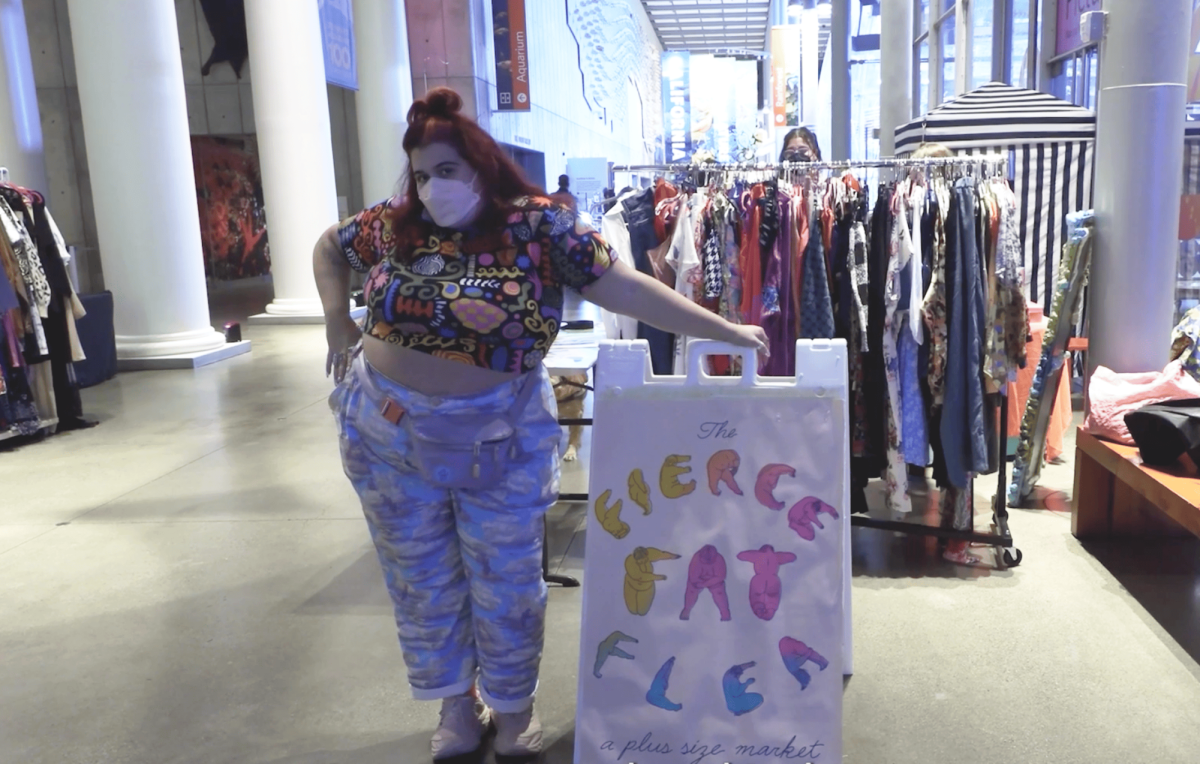We are all too familiar with the quintessential San Francisco food truck experience. You and your friends are downtown and you want something to eat but don’t have much time.
You’ll see them off of Montgomery and Post outside the Macy’s on Thursdays. On Fridays, they’ll line up at Fort Mason’s cultural arts center, attracting hundreds of people and even on campus by Hensill Hall until 2 p.m. every day. It wouldn’t be unfair to say that in the city, you can’t drive 10 minutes without running into one of them.
In fact, SF has such an affinity for them, we have our own website to help you locate where your favorite food truck is at any given time.
You might have asked yourself a few years back, just how viable this industry really is. The answer may surprise you. With an estimated $2.7 billion of revenue food trucks made last year alone, mobile food is seeming less like a trend and more of a revolution.
Somehow, in midst of it all, we have lost the concept of what the experience of eating from a food truck was originally like. Did we forget the best food trucks are the ones that serve simple, straightforward, comforting food? I’m talking about barbeque, fish and chips, lobster rolls and burritos –– none of this fusion stuff we wouldn’t recognize even a few years ago.
This is not to say experimental food isn’t good food but rather, that there is a time and place for it, and food trucks were never created to give you that experience. So what we have now is food trucks trying to be fancy and getting away with it. Which is great for your Snapchat but not for keeping the integrity of the cheap, easy and quick food truck alive.
If it’s possible to gentrify food trucks, we have been doing it for the last 5 years and we are paying the price for it now. People don’t seem to mind paying as much as they do which is perhaps the most shocking part. In a study done by Emergent Research in 2012, 272 interviews were conducted within the San Francisco suburb about food truck reception.
The study concluded that the average food truck diner spent an average of 14.99 on dinner and rated their food as above average quality. 90 percent of interviewees said they plan to eat at food trucks again, using words such as “fun”, “exciting,”, “different” to describe their experience.
That may be, but In their origin, food trucks were the cheapest alternative to being waited on, outside of posting up at your local McDonalds, and they didn ’t produce anything fancy. The companies that bought trucks were new and didn’t have a brick and mortar to pay for.
’t produce anything fancy. The companies that bought trucks were new and didn’t have a brick and mortar to pay for.
Because of this, they could afford to sell cheap food and they did. This made restaurants frustrated because they weren’t able to compete with the cheap prices. They, of course, needed to pay expensive Bay Area rent.
Thus, the food truck began to take off, not only appealing in price to young people but also to the amateur chefs themselves. This was a chance to get their name out there without taking a huge gamble on a storefront or taking out a loan that would take years to pay back. They wanted feedback on their ideas before they made them a reality, setting up their own storefront.
It also took a lot of the logistics that come with opening up shop, such as hiring people to work for you, obtaining multiple licenses, investing in decorations, an expansive kitchen, etc.
In fact, these trucks only sold a few different specialized items and they prided themselves off of cooking food that they grew up with, food their mothers and grandmothers would make. Comfort foods.
Somewhere, and believe me, I’m trying to figure it out, food trucks became some other beautiful monster that I want to appreciate and obsess over like everyone else but everytime I’m in line, I I can’t help but think they’ve changed for the worse.
Now you can easily spend just as much money on a plate of tacos that you would be getting waited on, maybe even more. The plates are smaller, the prices are higher, the wait times are way longer and the menus are longer and more complicated.
And for what exactly are you paying so much for that is so much cooler fundamentally than sitting down with a group of friends and being waited on?
There is an obvious appeal in the way the food truck industry is headed. It’s a cool way to spend your Saturday night. Your food is likely Instagrammable and in some cases, you will get to try out some new culinary experience that hasn’t made it into restaurants yet. There will always be classics people will wait 20 minutes or longer in line for, such as the pork belly bao from the legendary Chairman, or well, anything Senor Sisig sells.
Maybe the issue is, we don’t mind paying higher prices for food anymore. But we don’t realize that food trucks charge what they charge because they know they can get away with charging that. People will not hesitate to open their wallets when faced with a new food trend, especially when it’s on wheels.
I’m not saying break up with food trucks, because I probably never will. You should always want to support the people who make the food in the place you live unique because it’s not easy to run a business, let alone a food business.
However, the next time you reach for the $15 plate of tacos or that really over-complicated $12 grilled cheese, consider that we, in San Francisco, pay a very high price for the trends we directly support. We should choose to support the trucks that offer food with ingredients your parents would recognize; food that seems and feels authentic. Long, complex menus that reach too far are a set up for disappointment. If it seems too fancy or specialized, it’s because it probably is.
And in that case, you’re better off paying equal or less money to sit down and be waited on.










